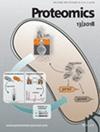Metaproteomics Reveals Community Coalescence Outcomes in Co-Cultured Human Gut Microbiota
Abstract
The human gut microbiome exhibits characteristics of complex ecosystems, including the ability to resist and compete with exogenous species or communities. Understanding the microbiome response that emerges from such competitive interactions is crucial, particularly for applications like fecal microbiota transplantation (FMT), where the success of treatment largely depends on the outcome of these microbial competitions. During these processes, microbial communities undergo coalescence, a phenomenon where distinct microbial communities combine and interact, leading to complex ecological outcomes that are still being uncovered. In this study, we examined the coalescent dynamics of 10 different pairs of human gut microbiota by co-culturing the plateau-phase communities of individual samples in vitro, and highlighted the critical role of metaproteomics in elucidating the competitive dynamics of co-cultured human fecal samples. Results showed that microbiome changes observed after coalescent co-culture were not straightforwardly an approximate average of the initial taxonomic or functional compositions of the two samples. Instead, both coalescent microbiotas behaved as cohesive structures, influencing the competitive outcome toward one of them. Although co-cultured communities usually exhibited high degrees of taxonomic similarities to one of its parental samples, we found that 23% of the observed proteins still showed differential expression or abundance at the metaproteomic level. Interestingly, and somewhat counterintuitively, no specific microbial ecological characteristic could linearly determine which of the two initial microbiotas would act as the driving microbiota. Instead, we observed that the outcomes of the microbial co-cultures resembled a “rock-paper-scissors”-like dynamic. Through an analysis of co-colonizing species in such “rock-paper-scissors”-like triangle, we discovered that co-colonizing species that contributed to winning each between-community competition differed from one community pair to another. This suggests that no single species or function consistently dominates across all situations; instead, this involves more complex mechanisms, which require further in-depth investigation in future studies. Our findings demonstrate that the complex competitive interactions between microbial communities make predicting success through a single parameter challenging, whereas pre-co-culturing shows promise as an effective method for predicting outcomes in ecological therapies such as FMT.
Summary
- This study underscores the critical importance of integrating metaproteomics with microbial systems ecology to gain a functional understanding of microbial coalescence.
- By addressing the ecological question of how two communities compete when they are brought into contact, we investigated the metaproteomic responses of pairs of coalescent co-cultured human gut microbiotas.
- Our results revealed significant insights: post-co-culture microbiota changes were not merely a simple average of the initial compositions but instead exhibited distinct shifts toward one of the original samples.
- Notably, due to the observed rock-paper-scissors-like cycle of winning, we argue that no single microbial ecological characteristic could straightforwardly predict which of the two samples would dominate as the driving microbiota.
- Overall, our findings suggest that during coalescence, microbial communities behave as cohesive structures both taxonomically and functionally, influencing competitive dynamics and ecosystem complexity, indicating that an in vitro coalescence pretest may help predict the success of therapies like FMT.



 求助内容:
求助内容: 应助结果提醒方式:
应助结果提醒方式:


